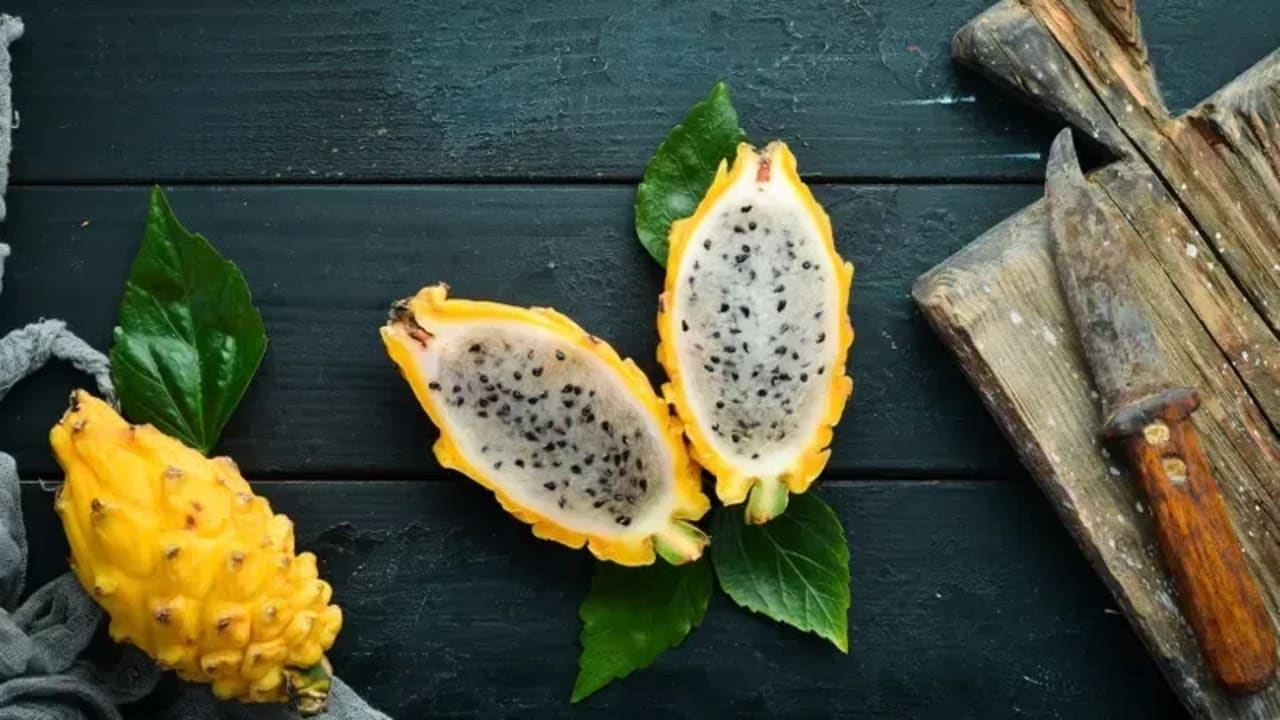Jerusalem Post
ByDR. MAYA ROSMAN
Although exotic, this tasty and unique fruit also grows in Israel. Discover what dragon fruit—or pitaya—can do for your body.
Pitaya (Pitaya or Pitahaya), better known as "dragon fruit," is one of the most intriguing and striking exotic fruits. It originates from Central and South America, where it was cultivated for hundreds of years by the Maya and Aztecs, but today it is also common in Southeast Asia, Australia, the U.S., and even Israel.
Its stunning color—pink, red, yellow, or white with tiny black dots—has made it a social media star and a popular ingredient in breakfast bowls and smoothies. But behind the colorful appearance lies a fruit with surprising nutritional value, which may contribute to health in many areas.
And before we start detailing, know that when it comes to natural colors in fruits and vegetables (as opposed to processed products, of course), the color indicates important antioxidants. The vivid colors of pitaya show how much nutritional value and benefits it has—even before you read about the research.
Nutritional Values – More than Just Exotic Beauty
A standard serving of pitaya (about 170–180 grams) contains on average only about 100 calories.
It is low in fat and protein but rich in healthy carbohydrates and about 5–6 grams of dietary fiber—a respectable amount that contributes to satiety and proper digestion.
Key Vitamins and Minerals:
Vitamin C
About 30–40% of the recommended daily intake in one serving. An important antioxidant that supports the immune system, aids iron absorption, and improves skin health.
Magnesium
An essential mineral for muscle, nerve, and immune system function. One serving of pitaya provides about 10% of the daily requirement.
Iron
Although the amount is relatively moderate, the presence of vitamin C in the fruit helps with better absorption in the body.
Antioxidants
Pitaya contains flavonoids, carotenoids, and betalains—compounds studied in connection with reducing inflammation and protecting cells.
Pitaya seeds, those tiny black kernels, are rich in essential oils and omega-3 and omega-6 fatty acids, known to support heart and skin health.
Proven and Promising Health Benefits
1. Digestive Health
Thanks to its high fiber content, pitaya helps balance bowel activity and promotes a feeling of fullness. Studies have found that pitaya fibers act as prebiotics, nourishing good gut bacteria and contributing to microbiome balance.
2. Immune Support and Inflammation Reduction
Vitamin C combined with the fruit’s unique antioxidants helps reduce chronic inflammation and protect against free radical damage.
Research published in the Journal of Pharmacognosy and Phytochemistry found that an extract from the fruit improved inflammation markers and liver performance in mice fed a high-fat diet.
3. Blood Sugar Regulation
Preliminary studies suggest that consuming pitaya may improve fasting blood sugar levels in people with prediabetes and type 2 diabetes, thanks to fiber’s effect on carbohydrate absorption.
A small clinical study in Malaysia showed that eating red pitaya for four weeks improved fasting sugar levels in overweight individuals.
4. Heart and Vascular Health
Animal studies indicate that pitaya components may reduce LDL cholesterol and improve blood flow.
Researchers in Vietnam pointed to pitaya’s possible effect on lowering cholesterol and improving plasma antioxidant levels.
5. Strong Anti-Cancer Potential
Compounds like betalains and carotenoids have shown inhibitory activity against cancer cell development in lab studies, especially in prostate and colon cancer.
6. Skin and Body Health
The combination of vitamin C, antioxidants, and essential oils from the seeds contributes to elasticity, skin cell renewal, and an overall sense of freshness.
A Local Love Story
In Israel, pitaya is mainly grown in moshavim (cooperative villages) in the center and south. Yoav Shavit, a grower from Moshav Kadron, says that to produce this unique fruit, each flower must be hand-pollinated during the flowering season. "It’s a patient and precise process that allows bringing especially high-quality fruit to the market," he says.
They wake at 4 a.m., before sunrise, to get ahead of the bees and collect the pollen… brushing each flower individually to perform pollination for fruit production. The flower, it turns out, is the size of a hat! You could wear it on your head because it’s so large.
The pitaya season in Israel is relatively short—from July to November—so prices are sometimes high, but local fruits are praised for their quality.
Bottom Line:Pitaya may look like just another exotic trend, but it is definitely a fruit with real health benefits—rich in fiber, vitamin C, and antioxidants, supporting digestion, the immune system, and heart health. If you see it on the shelf, it’s worth trying!








.png)







